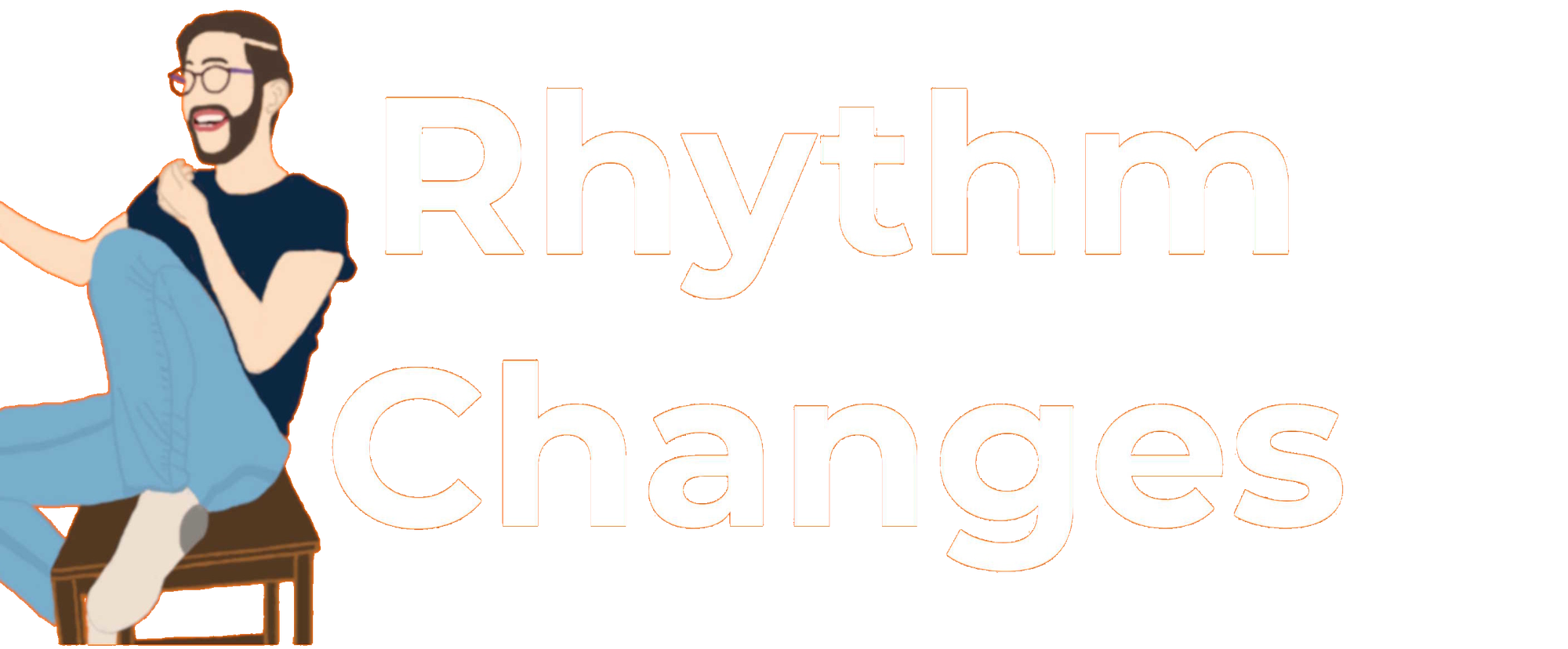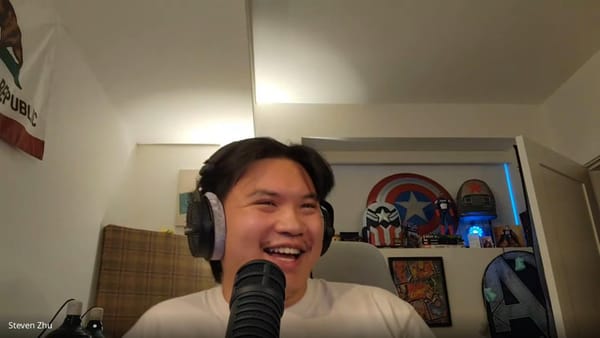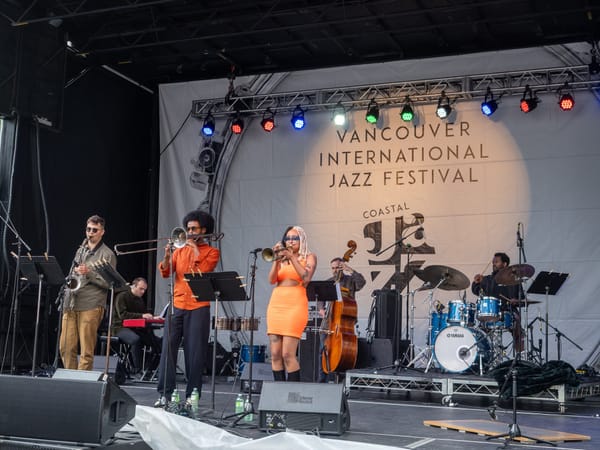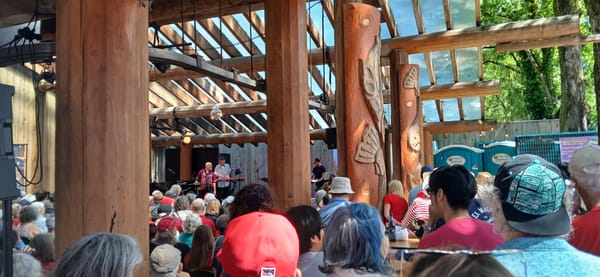Strong Towns music: strong music scenes
I remix Chuck Marohn’s ideas into a Strong Towns music paraphrase, where it’s all about musical life.

This work, “Strong Towns music: strong music scenes”, is a derivative of the following works by Strong Towns:
- “Why Communities Must Break Out of the Resource Trap“
- “The Modern Approach to Development Doesn’t Work for Local Communities“
- “How to Retain Capital in Your Community“
- “Accelerate Success in Your Place with Economic Gardening“
- “Build Community Wealth with Incremental Investment“
- “Reinforce the Main Street Ecosystem in Your Place“
- “Break Out of the Resource Trap with a Strong Towns Approach“
- “Communities Need to Make Space for Entrepreneurs“
These works are available under Creative Commons Attribution-ShareAlike 3.0 Unported (CC BY-SA 3.0).
“Strong Towns music: strong music scenes” is also available under this license (CC BY-SA 3.0).
Introduction
Previously, I edited some ideas from Strong Towns into another post on my musician's website. It can refresh your mind on the thoughts that shaped me.
Here, I remix Chuck Marohn’s ideas into a Strong Towns music paraphrase, where it’s all about musical life.
One quick note is that Strong Towns did publish an article about music scenes in 2019. But it’s brief, and it references only one of their podcast episodes.
Little bets
We all want to live in a prosperous place, one where our hard work creates a better life for ourselves, our families, and the next generation.
Will the next generation of music artists and cultural creators make a living here? Do they have enough of a future here to stick around—or will they quit, leave, and never come back?
In Strong Towns music scenes, “The scene is where we grow our wealth.”
The quintessential local music scene was merely a collection of venues assembled in the heart of town, often restaurants and clubs. Think of the jazz you might still find in New York City and the extent to which it resembles what you’d have found in the 1950s. Sure, some of it looks different, but a lot of the vibe remains.
Putting on entertainment in existing dining establishments required almost no private investment up-front and certainly no public (government) investment. We can think of this type of venue as “a little bet.” If people start to gather in numbers around this music, then it can grow outward through those people.
Many presenters of music have never made it beyond that club phase; they failed before they even got going. In my home city of Vancouver, for instance, we’ve seen many small venues come and go in just my short lifetime.
The venues that endured, however, all grew in the same way: incrementally.
Traditional scene development vs. modern scene development
In the traditional scene, increased private investment supported subsequent increases in public investment. Growing community wealth increased community capacity.
In the modern scene, public investment is used to induce subsequent private investment. This is where artist grants and non-profit operating grants come in.
Many grants are subsidies for projects that destroy wealth in their music scenes; in particular, artist grants don't help artists make a living, they merely help them spend more money.
And no matter how much you love the programming that comes out of non-profit organizations, many of these organizations would fail to build wealth for their community without public financing of operations.
Policy has focused on making the flow of capital as great as possible while encouraging local communities not to bother about retaining that capital. So long as the flow keeps expanding, the fact that it flows right through and out the drain is immaterial.
Scenes will build stability and prosperity when they are:
- Redirecting the flow of capital so that it stays in the community longer, in turn growing local capacity and providing greater community benefits.
- Making low-stakes space for artists (people in the community with crazy ideas and the passion to run with them) to fail quickly, learn, and get back to creating.
- Accelerating success by aggressively growing enterprises that import capital into the community.
- Allowing the community to grow incrementally again—to thicken up and become more productive while shunning the large leaps and silver bullet projects that are a distraction today and a drag on future prosperity.
- Reinforcing the local economy that expands the opportunity people have to improve their quality of life and the lives of those around them, while growing their own financial security and stability.
When money flows into a community and then quickly back out again, it’s the economic equivalent of eating junk food: the empty calories may give a small sugar rush but do little to build a healthy body.
Plus, who is going to stick around when the going gets tough?
Import replacement
Import replacement is about replacing things we send money out of the scene for with viable local alternatives. Some examples of import replacement include:
- Attending local gigs, not just international tour dates.
- Hiring a local service to host or design your website instead of a multinational one.
- Banking at a local bank or credit union instead of one of the nation’s large banks.
- Choosing to walk or bike to a destination instead of spending money on driving.
Import replacement strategy: a Strong Towns music approach
- Not all projects are equal. Just because something creates “work,” “gigs,” or a new album doesn’t inherently make it a worthy pursuit.
- The music industry might be about capital flow, but a local economy is not.
- “Buy Local” is not the whole solution. After all, we still attend international touring concerts, but import replacement creates local alternatives that are competitive with options from outside.
Getting started on an import replacement strategy is easy. Here are some things you can do:
- Become more efficient with what you bring in from outside. If there are no local publicists or grant writers, all the money spent on publicity leaves the scene, so doing things yourself at first will allow for more resources to stay local.
- Work with local businesses and when local ones are not selected, let them know why.
- Never subsidize franchises and other non-local competitors.
- Start small. The effects here are cumulative while the actions are habit-forming and self-reinforcing. Even if you start a Bandcamp page and make $50 in sales this week, that’s a few dozen dollars to deploy in your local scene that otherwise wouldn’t exist.
Music industry vs. artists
Music industry: People who allocate capital in the professional music business with the expectation of future financial return.
Artist: A person with a crazy idea who does not know they can fail.
The company who signs or promotes the most commercially successful artist from your city is part of the music industry. The person who streams a showcase from a studio—or from home—with only a handful of local musicians and some basic equipment is an artist. To help artists, we must:
- Understand the nature of small bets. The music industry seeks steady gains over time but artists are generally engaged in pass-fail types of endeavours.
- Tolerate a degree of messiness. Local governments often prefer to work with the music industry over artists because the industry keeps things tidy. In comparison, artists can come across as disorganized.
- Get out of the way! Ask artists, “what are you struggling with?” Work to shrink those struggles so the artists can continue creating in their own directions.
- Celebrate success and don’t personalize failure. What should reflect poorly on the scene is if not enough artists are stepping forward to give their ideas a try.
Making space for artists in a Strong Towns music scene
- Use pop-up spaces. We think of big festivals and packed venues when we think of professional music, but oftentimes artists are not ready for that. This is perfectly okay—see above about not personalizing failure.
- Waive home occupation requirements. Any artist can start a sole proprietorship from their home if their city allows. They should have reasonable allowances for doing music work (even with volume) at home, within certain hours if necessary.
- Ease up on permits and regulations. Processes that require someone to prove up-front that they won’t be a nuisance are easy on the music industry but a huge obstacle for artists.
- Lower the barrier to entry for using existing spaces. Ever tried to self-produce and present a concert with a liquor license? Not many small artists get past the hurdles to do it.
- Use the maker-space and co-working models. The most successful artists invite many guests to join them in the studio, in turn facilitating new ideas.
The most common way to attract music industry capital from outside the scene is to provide subsidies, like grants. A more successful approach is to create an active ecosystem of artists that signals to outside industry professionals (and other artists, of course) that they should want to be there.
Economic gardening
Economic gardening recognizes that the most stable and prosperous musicians are those that are homegrown and have the backing of their scene. Generally, those artists start with applying local talent and skills to meet local demand.
To generalize, there are three stages of artists’ growth:
- DIY artists working alone; small venues; independent professional service people.
- Profitable artists, groups, and businesses generating $100,000 to $1 million in annual revenue.
- Established ventures with over $1 million in revenue.
Economic gardening focuses on the artists best positioned to prosper in their scene: Stage 2.
The vast majority (over 80%) of music ventures are Stage 1 and will never grow beyond that. That's okay!
Most economic development programs focus on Stage 1 or Stage 3 companies, which can be unhelpful. Economic gardening recognizes that Stage 2 companies create more prosperity where it’s needed.
Also, Stage 2 jobs tend to provide greater options for advancement alongside higher pay (remember, they’re profitable, so they have net earnings after paying living wages to workers).
The best jobs are locally grown
Having a Stage 3 artist come from outside to record an album in your city creates no more prosperity than seeding dozens of local projects and having only one succeed this year. The former will garner attention while the latter builds wealth in your scene.
To prepare your community for an economic gardening program, start with the following:
- Introduce the idea to key officials. Ideally, the idea quickly becomes theirs.
- Identify partners and key supporters.
- Create an economic gardening steering committee.
- Develop a service delivery approach. Each economic gardening program will be different based on the needs of the participants and the resources of the program.
- Commit to ongoing transparency and rigour. Economic hunting is all about the next big score, but economic gardening requires an ongoing, rigorous commitment to an approach.
Even so, there are instances where it makes sense to provide public subsidies to institutions. Those cases look a lot more like repairing damage or addressing past failures than welcoming something shiny and new.
Which one would you rather have for a Strong Towns music approach?
Provincial and federal Investments in the music industry = Short-term work projects & growth
Local investments in the scene = Long-term maintenance & prosperity
Like a company founded with a lot of cash but a bad business model, the music industry has literally grown itself into decline. There is no way for a scene to grow their way out of the problem using the same development model.
The music industry must stop financializing and switch to maintenance, making better use of existing assets. Our scenes need to thicken up, increasing their prosperity as they become better places to live.
This happens with incremental development, the time-tested approach used for thousands of years to build wealth over a broad area over a long period of time.
Building wealth in your scene
- Big-budget music production is not an asset. The copyright is an asset, but spending lots of money to make the recordings is a long-term liability — one that never goes away if you’re a major-label artist.
- You don’t need more big-budget music projects. The prosperous artist starts out working at zero cost, only adding expenses when they become part of a profitable process.
- Small steps are better than large leaps.
- Maintenance is king. When a local government prioritizes maintenance, it signals to the scene that it is serious about well-run, excellent facilities—and that it can earn trust with bigger undertakings.
Strong music scenes need incremental investment and a process of adapting:
- Rely on little bets, not huge projects.
- Adapt to feedback. Genres and products that get done the same old way become fragile.
- Use bottom-up action, not top-down systems.
- Conduct as much of life as possible at a personal scale. If scenes work at the human scale instead of the global scale of streaming platforms, they will grow more prosperous.
- Always do the math. Local governments budget year-to-year, yet they tend to be casual about debt.
- Focus on reducing debts and liabilities. Every artist deserves to be free of the major-label deal structure when they embark on a career. We can start by growing profitable Stage 2 businesses in our community.
To have focus and intention means starting where you are and working with what you have:
- Forming a working group.
- Taking stock of where you are. Account for the problems you face and the assets you have.
- Finding the easiest first steps. What can you do right now with what you have?
- Getting started.
Conclusions
- Fund small bets, not big operations. Municipalities already have more obligations than their tax base can sustain. Music will be a net positive—a giver—to this base, not a taker.
- Redesign development offices for economic gardening. When businesses are ready, help connect them to private capital.
- Invest in platforms — don’t subsidize. Rehearsal studios and DIY spaces provide capacity.
- Design benefits for multiplication. For example, instead of giving $100,000 to one label, endow a local entity with $100,000 to fund small improvement grants.
The 4 steps to strong towns through music scenes
- Look at where problems are in the community.
- Ask, “What is the next, smallest thing we can do right now to address the problem?”
- Do that thing. Do it right now.
- Repeat.





